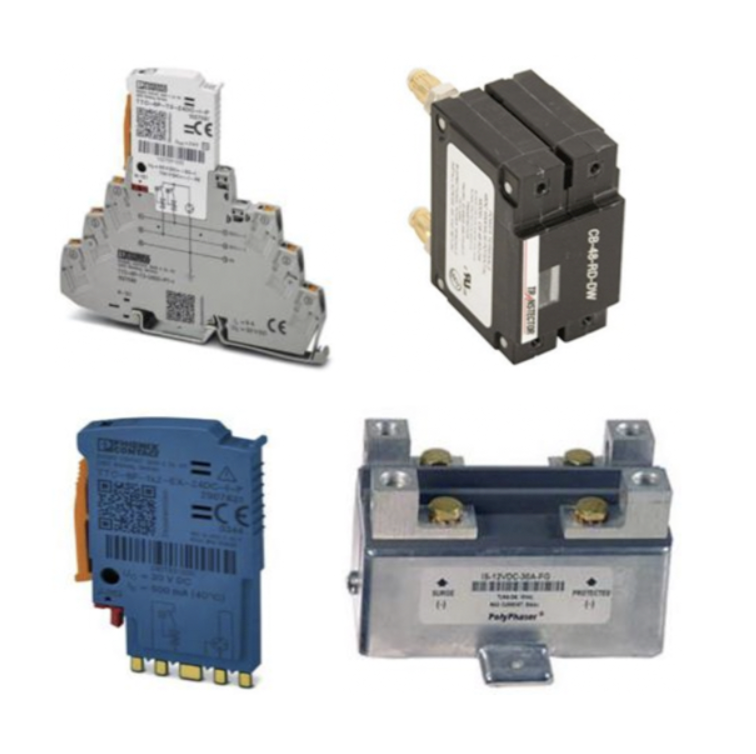DC Surge Protectors

DC surge protectors (SPDs) work by diverting or absorbing excess voltage during transient events such as lightning strikes, switching surges, or short-term faults in connected equipment. These protective devices are placed at critical points throughout a DC power system - between photovoltaic panels and inverters, or within distribution panels where they can intercept and manage sudden energy surges before they reach sensitive electronics.
Because DC power systems maintain constant current, even small surges can cause significant damage if left unprotected. Modern DC surge protectors are engineered with advanced components that react quickly to overvoltage conditions, suppressing transient energy and restoring stable operation. Compact and easy to install, they are well-suited for control cabinets, junction boxes, and enclosures in solar, industrial, and telecom installations. Whether for renewable energy systems or off-grid power applications, DC surge protection ensures consistent uptime, reduced maintenance costs, and extended equipment life.
FAQs
Q: What is the purpose of a DC surge protector?
A DC surge protector safeguards direct-current electrical systems from transient overvoltage events caused by lightning strikes, switching operations, or power faults.
Q: Where are DC surge protectors installed in a solar system?
They are typically installed between solar panels and inverters or within power distribution boxes to intercept voltage spikes before they reach sensitive equipment.
Q: Are DC surge protectors necessary in battery energy storage systems?
Yes, surge protectors are critical in battery systems to prevent overvoltage damage caused by switching surges or faults in charging and discharging circuits.
Q: Can DC surge protectors be used in telecommunications equipment?
Yes, they are commonly used in DC-powered telecom systems to protect communication hardware and prevent downtime caused by transient voltage events.
Q: How often should DC surge protectors be replaced?
Replacement frequency depends on exposure to surges, but routine inspections should be performed annually or after severe lightning events to ensure continued protection.
Why Buy DC Surge Protection from RSP Supply
RSP Supply offers a complete range of DC surge protectors from trusted manufacturers, designed for solar, battery, and telecom applications. With same-day shipping on most products, competitive pricing, and expert support, we help ensure your DC systems stay protected and reliable under all conditions.

